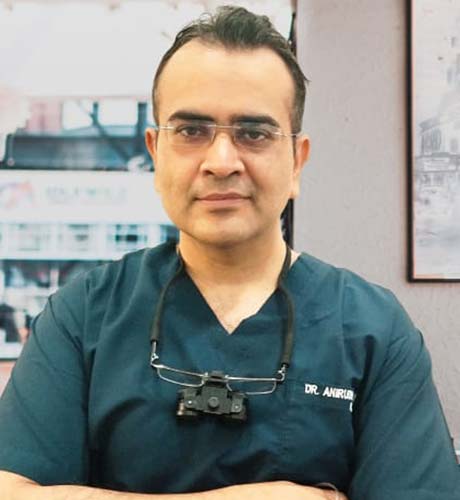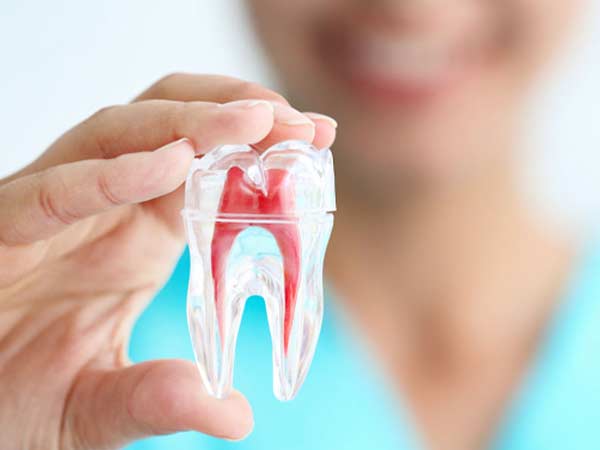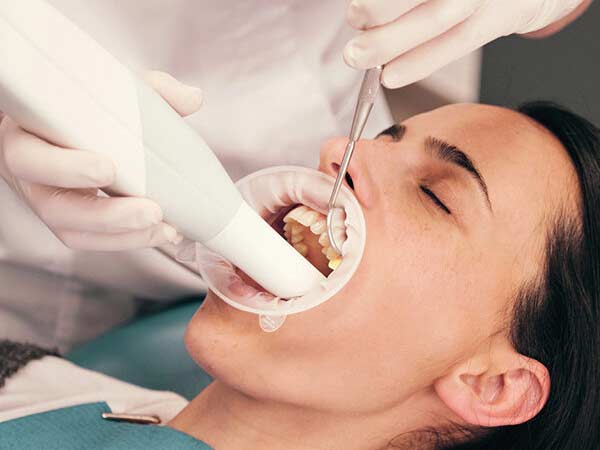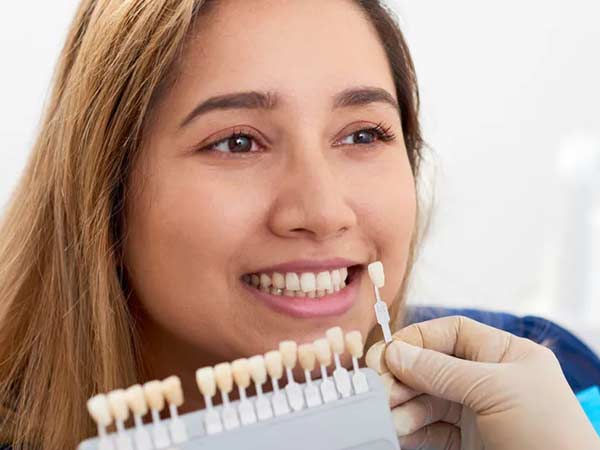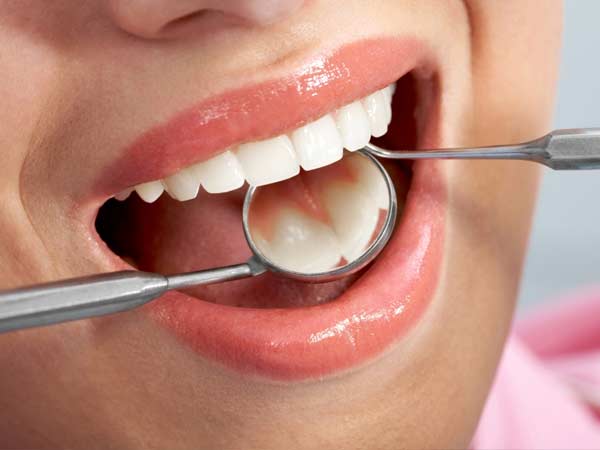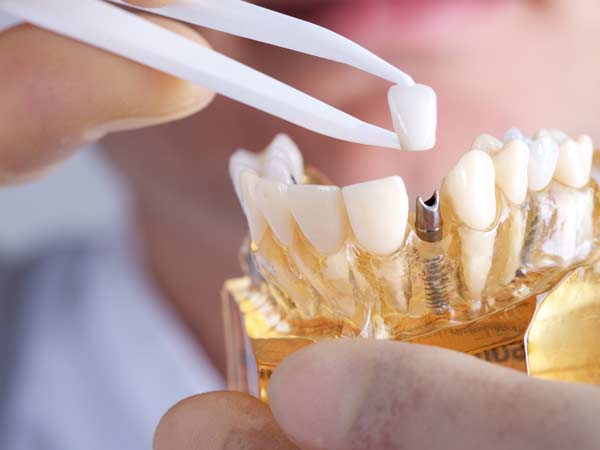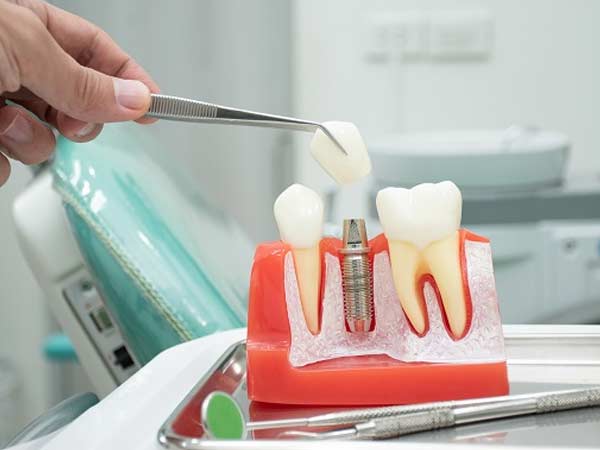Smile Makeover: Reinvent Your Smile
Have you ever looked in the mirror and felt hopeless about your smile and all of its issues?
Many of us are not blessed with a perfect smile, but the good news is that there is no need to be disheartened anymore. Once the hallmark of famous stars, Smile Makeover is now easily accessible to each one of us. It is now possible to get that Hollywood smile with minimally invasive dental procedures in a couple of days at Divine Dental .
A smile makeover is the process of improving the appearance of the smile through one or more cosmetic dentistry procedures, such as:
Some of the components taken into consideration include your facial appearance, skin tone, hair color, teeth (color, width, length, shape and tooth display), gum tissue and lips. Smile makeovers are performed for many reasons and customized according to your unique considerations.
Which issues can my smile makeover address?

A smile makeover or full mouth rehabilitation can target and fix nearly any cosmetic issue and most health issues affecting your smile and the way it looks or functions.
What is it that you like or dislike about your smile or your teeth? Some aspects of your smile that your cosmetic dentist will review with you and that could be improved include the following:
Tooth Color: Silver or amalgam dental fillings can be replaced with natural, tooth-colored composite restorations, while teeth whitening can improve the color of stained or dulled teeth. Tooth color and shading are important considerations during the evaluation of and preparation for various procedures, including porcelain veneers, crowns, bridges, composite bonding and dental implants.
When considering the color of your teeth, keep in mind that dark or discolored teeth may suggest an aged mouth. A well-shaped smile comprised of bright, white teeth lends to a youthful appearance. The shade your dentist selects for teeth whitening and veneers is carefully evaluated with special consideration given to the tone and color of your face and hair. Cosmetic dentists are skilled at finding the right balance between providing you with a brighter, whiter smile and maintaining a natural tooth color. Discoloration of teeth and gums

Brown and yellow stains appear on teeth because of highly pigmented foods and substances like tea, cola, and tobacco. You can also get heavy tooth discoloration from certain medications or traumatic tooth injuries.
Damaged teeth

Your teeth might get chips or cracks from a distinct acute injury, like direct impact to the face. They can also gather damage when you bite down on solid objects, use your teeth in lieu of scissors, or grind your teeth at night.
Gum disease
Crooked teeth

Alignment and Spacing: Teeth that are crooked, overlapping or have gaps between them can be straightened and aligned when necessary through orthodontics or Invisalign and improved with veneers.
Missing Teeth: One or more missing teeth can negatively affect the appearance of your smile – as well as affect your bite and increase your risk for tooth decay – making replacement an integral part of oral health and facial esthetics. Missing teeth can be replaced by dental implants, bridges or partial dentures.
Harmony and Balance: Uneven, chipped and cracked teeth can be cosmetically bonded for an improved appearance, and a gummy smile can be re-contoured to help improve the overall look of the smile.
Fuller Lips, Smile and Cheeks: An unshapely or aging face can be improved or rejuvenated with certain procedures in the smile makeover category, including orthodontics and/or oral maxillofacial surgery.
Which treatments can I include in my smile makeover?
A cosmetic dentist will work closely with you to develop a treatment plan designed to achieve exactly what you want from your makeover.We start with a clinical evaluation of your teeth and gums followed by professional photographs and videos. Digital and 3D smile designing is done to give you the smile of your choice.
After reviewing your concerns, the team recommends a combination of these treatments and services:

- Gum contouring / grafting/Gum reshaping-Gum reshaping can improve a “gummy” smile in which teeth appear too short, or where the gum line appears uneven. A small amount of gum tissue — and excess bone tissue if necessary — is removed and contoured to expose more of the teeth. This procedure can be done to one tooth to even the gum line, or to several teeth to expose a natural, broadsmile.
- Teeth whitening– who doesn’t like a bright smile? Whitening is a one-time procedure performed by a dentist. It is amongst the most common and widely adopted cosmetic procedure .. Individuals with yellow tones to their teeth — as opposed to gray tones — respond best.At Divine Dental we use the Philips ZOOM WhiteSpeed, the #1 patient requested whitening brand. It relatively inexpensive and most effective way to enhance a faded smile in just an hour.

Laser gum depigmentation
Color of gums play a crucial role in aesthetics of a smile. Normal color of a gum should be coral pink, but due to deposition of melanin gums appear to be darker. Several lifestyle factors like smoking tobacco, several medications or amalgam tattoo could also be the reason for darker gums. Gum depigmentation with the help of lasers is a minimally invasive procedure where the laser energy is used to peel off the gingival epithelium. Laser causes less bleeding, post opt complications like pain, swelling and infection are also less compared to surgical techniques.
Dental implants

one or more Dental implants( titatium screw) are placed in the jawbone to replace one or more missing teeth. it is a fairly common procedure performed in our facility .
All-on-4, All-on-6, and All-on-8 dental implants
You can avail of All-on-4, All-on-5, and All-on-6 dental implant solutions at our centre.
It’s the more economical and practical method of putting back all your missing teeth without going the more expensive and painful route of giving every empty tooth socket its own dental implant and individual crown. The major differences of All-on-4, All-on-6, and All-on-8 dental implants are found right on the numbers on their names. They refer to the number of implants that will be strategically placed on the top and/or bottom jaws.
The More The Merrier: All-on 4 implants use 4 implants in each jaw , in order to connect 4 rows of dental bridges together. All-on-6 implants have an extra 2 implants to make the anchorage for the dental bridges to be tighter and more solid. Meanwhile, All-on-8 dental implants offer probably the maximum amount of implants needed for restructuring your mouth and filling in all the missing teeth.

Traditional dentures

Dentures are artificial teeth and gums that are formed to your mouth and created by your dentists to replace lost or removed natural teeth. Dentures can either be full or partial, meaning they can either replace all teeth on either the top or bottom gum line, or just a few that are missing. Regardless of what kind of dentures you may need, they will be custom designed to fit your mouth, and visually matched to your existing teet
Overdentures –
Overdentures are an alternative that can be used if traditional dentures prove to be extremely uncomfortable or if you have a few natural teeth left. Overdentures are fitted over the roots of natural teeth and either rest on these or on dental implants, if there are no natural teeth to fit over. Some find this type of denture more comfortable and they are also easily removable.

- Crowns- A crown is a tooth-shaped “cap” that’s placed over a weak or damaged tooth to improve its shape, size, strength, or appearance. Most crowns last five to 15 years. We provide porcelain fused to ceramic,zirconia and all Ceramic or porcelain crowns for natural and lifelike appearance

- Bridges. If you have one or more missing teeth, a dental bridge can fill the gap with one or more artificial (false) teeth. A bridge is typically made of crowns on either side of the missing tooth or teeth supporting the pontic (false tooth) and is cemented in place.They can be made from porcelain to aesthetically blend in with your natural teeth

Veneers
Veneers are thin covers that attach to the front surface of your teeth. While they don’t improve the way your teeth fit together or function, they make the frontal surfaces of your teeth look more attractive or similar to one another.
At Divine dental, the team customizes your veneers according to the original shape, size, and color of your teeth so they look as natural as possible. They use porcelain to make the veneers, which comes in a range of colors and has a very similar translucency to natural teeth.
Porcelain is also similar in strength and durability to your natural tooth enamel, the outermost layer of a tooth.
As long as you follow proper care instructions, porcelain veneers can last several years before you detect any wear-and-tear that might require a replacement.
How can veneers improve my smile?

Veneers mimic the natural characteristics of your teeth while eliminating the appearance of many of the most common types of cosmetic damage. Sometimes teeth break or wear down and still function just fine without the need for crowns or dental implants.
As long as you’re addressing issues with teeth in the front of your mouth and not your molars, you can use veneers to cover defects like:
- Minor cracks
- Minor chips
- Discoloration that doesn’t improve with whitening
- Worn-down biting surfaces
- Minor twists or overlaps
- Small or short teeth
- Gaps between teeth
Porcelain veneers are stain-resistant and maintain their white shades. However, it’s important to know that veneers aren’t a reversible treatment since your dentist must alter the structure of your natural teeth before attaching them.
If you’re interested in improving your smile’s beauty with high-end porcelain veneers, schedule a consultation at Divine Dental.
- Composite bonding– Among the easiest and least expensive of cosmetic dental procedures, bonding can repair chipped or cracked teeth, close gaps, change the shape of teeth, or be used as a cosmetic alternative to silver amalgam fillings.

Inlays or onlays

Inlays and onlays are indirect dental restorations, which means they are made outside your mouth in a laboratory. These restorations are typically used when a cavity is too large for a simple filling.Inlays and onlays are more resistant to fractures and damage than traditional cavity fillings and are Stain-resistant
Plaque and tartar removal– Scaling and root planing are otherwise known as deep cleaning in dentistry. The procedure gets rid of tartar (hardened minerals) that can adhere to your teeth. You may need these treatments if you have advanced gum disease.

Enamel Recontouring
Recontouring or reshaping is a procedure in which a small amount of tooth enamel is removed to change tooth’s length, shape or surface. It is usually done to improve the quality of smile. When there is fixing of small chips or slightly irregular tooth surface, enamel recontouring is preferred. It is also performed to make the bite even. This is the most conservative cosmetic treatment; the whole procedure is quite painless and shows an immediate result.
Braces-
Dental braces are devices used to correct crowded or crooked teeth, or a misaligned jaw, known as malocclusion. Braces are most often used during adolescence, but more and more adults are getting corrective dental braces later in life. Braces are made of metal or ceramic, wires, and bonding material that attaches them to your teeth. An orthodontist is a doctor who specializes in this kind of device and treatment for misaligned teeth.

- Invisible braces/clear aligners/invisilign- Clear Aligners are transparent trays made of special material which are used to straighten teeth just like braces. They use gentle and constant force to move the teeth in the required position without going through the hassles of metal wires and brackets. They are custom made for each patient through a digital scan.
Aesthetic Components of a Smile Makeover
In addition to the color, alignment and balance of your teeth in the aesthetic zone of your smile (the section of upper and lower teeth that show when you smile), there are several attributes of your teeth and smile that your cosmetic dentist will evaluate with you when planning your makeover. These include:
Tooth Length: Long teeth lend a youthful appearance. Aging produces wear and tear that often results in shorter teeth, and a gummy smile also can make teeth appear shorter. A treatment for shorter teeth may include reshaping and lengthening the two front central teeth with composite bonding or porcelain veneers. If you have a gummy smile, your cosmetic dentist may provide treatment to modify the gum line and lengthen the appearance of the teeth using laser dentistry procedures. You may also be referred to a periodontist for crown lengthening if necessary.
Teeth lengthening may also impact your overall facial appearance. For example, shapely, long, square teeth on a round-faced individual can provide a slimming effect.
Smile Line: The smile line is an imaginary line that follows the edges of your upper teeth from side to side, which ideally should be the same as the curve of your lower lip when you smile. This standard point of reference may be used to help determine how long your new teeth should be.
Tooth Proportions: Your cosmetic dentist will examine your teeth to determine if they are in correct proportion with each other. Most people recognize a pleasing smile as one in which the two central front teeth are dominant and have a width-to-length ratio of 4-to-5. This proportion guides the length and width of other teeth in the aesthetic zone so that the smile line appears balanced.
Tooth Texture and Characterization: An artistic dentist can characterize your crowns or veneers to create a more feminine or a more masculine appearance, in addition to matching the look and feel of natural teeth or those you’ve seen in photographs.
Maintaining Your Results

Cosmetic dentistry procedures require regular oral hygiene care and may require maintenance over time. For example, teeth whitening must be repeated on occasion in order to maintain brightness. Porcelain veneers may chip or break off and need replacement. Permanent composite bonding may stain and require enhancement or replacement. Dental crowns typically require replacement after 10 to 15 years. Gummy smile improvements may also require enhancement over time.
Your ceramist, lab technician and the materials chosen by us also impact the longevity of your smile makeover.
Your oral health must be evaluated before we develop a plan for your smile makeover. Your dentist will conduct a comprehensive evaluation of your teeth, gums, underlying support structure and bite (occlusion) to determine candidacy for a smile makeover. If your evaluation reveals that you have an oral health problem – such as a misaligned bite (malocclusion) or gum disease – you will need to have that taken care of first.
Preview
Cosmetic dentists incorporate a variety of dental technologies to show you the changes that you can expect to see in your smile. For example, during your oral health evaluation for veneers and crowns, your cosmetic dentist may create a wax model mockup of temporary teeth to accurately communicate the requirements of your procedure to the dental lab technician. Temporaries and wax mockups also offer you a preview of the expected outcome to ensure that you are comfortable with the proposed treatment plan.
Other methods available for you to preview your smile makeover include the following:
Dental Imaging Software: Imaging technologies offer a preview of your results. Your dentist may use imaging technology to communicate the specifications for your procedure to the dental lab technician or any other dental professionals involved in your treatment plan. However, a digital image only gives you an idea of what you might look like when the treatment is complete; it may not fully match your final results.
Before and After Photos: Before and after photos of other patients who have had smile makeovers offer examples of the results you may expect to see. The photos may also give you an idea of the quality of work performed by your cosmetic dentist.
Dental Study Models: Your dentist will take an impression of your teeth and fill it with plaster to form an exact model of your teeth. The plaster can then be reshaped by trimming away excess areas or enlarging areas that require more volume. Dentists use study models to show you every aspect of the changes you can expect to see with your makeover. Dental lab technicians also use study models as guides for fabricating materials like crowns or veneers.
Your dentist may work with a laboratory that incorporates digital technologies. In such instances your dentist may be able to use digital scans of your teeth, rather than traditional impressions, for use in making the models of your teeth and smile.
Dental Composite Bonding Mockup: Dental composite bonding may serve as a mockup of your smile makeover. The dentist can temporarily bond composite resin material to your teeth so you can fully visualize the impact of the procedure before treatment begins. In the case of veneers, dental composite bonding allows you to identify how comfortable you are with their look, feel and fit. Adjustments may be made until you are comfortable with the function and appearance of your new smile. Temporary mockups have no lasting impact on your teeth once they are removed.
Maintaining Your Results
Knowing how to modify your oral hygiene habits to best care for your restorations will help you maintain your new smile for years to come.
Highly abrasive toothpastes and tooth brushing habits can scratch the surface of restorations, dulling their polish and luster. As such, non-abrasive fluoride toothpastes are recommended. Brush two-to-three times each day for maximum effectiveness.
Flossing is a key factor in removing debris and plaque from the teeth, and actually increases the lifespan of restorations and helps prevent tooth decay. Flossing is important for everyone, but is especially important for people with veneers, since impeccable gum tissue health is important.
Mouthwashes containing alcohol have been shown to have a negative effect on composite fillings. What’s more, the alcohol content in mouth rinses, over time, can degrade the bond between your restorations (crowns and veneers) and your teeth. Use alcohol-free mouthwashes instead.
Food and Drinks to Limit or Avoid
Avoid foods high in sugar and limit between-meal snacks to prevent cavities. Limit consumption of coffee, soda, tea, etc. to keep your smile stain free.
Do not drink alcoholic beverages excessively. Too much alcohol can ruin your dental work.
Other Precautions
Refrain from biting and/or chewing hard objects such as pens, staples, metal, bottle caps, etc.
If you grind your teeth (bruxism) and were fitted with a night guard to prevent damage to your teeth and restorations, wear it.
Although cosmetic dental restorations are not indestructible and will eventually need to be replaced (five to seven years for composite; 10 to 15 years for porcelain), the life of your new smile depends as much on how well you take care of it as on the skill and talent of your cosmetic dentist.
Replacing a broken or fractured veneer or crown involves impressions, shade matching, a temporary and waiting for a permanent restoration. And, depending on your dentist’s policy, you may be responsible for the full cost of replacing the damaged dental crown or veneer.
Follow your dentist’s instructions to ensure the long-term beauty of your new smile, and be sure to keep all follow-up and regular cleaning appointments with your dentist and hygienist..



